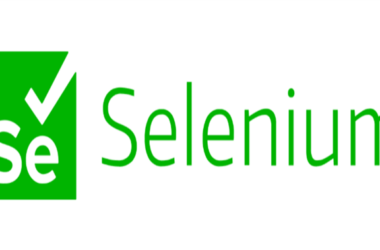Key Metrics for Evaluating Campaign Success
In today’s competitive digital marketplace, influencer marketing stands out as a powerful tool for brands aiming to engage with specific demographics. Businesses across various industries are tapping into the expertise of an influencer marketing agency to leverage influencer reach and credibility. However, launching campaigns is just the beginning; determining their success is vital for justifying marketing spend and refining future strategies. This article unpacks essential metrics that can help gauge campaign success, providing actionable insights for businesses eager to optimize their influencer marketing efforts.
Understanding key performance indicators (KPIs) can transform how organizations interpret campaign results, enabling them to tailor their approaches for improved engagement and ROI. Let’s explore these metrics in detail to bring clarity and structure to your measurement strategy.
Setting Clear Objectives
Effective measurement starts with clearly defined objectives. Without well-articulated goals, it’s challenging to determine success. Objectives act as a roadmap for your campaign, guiding the selection of appropriate metrics and ensuring all stakeholders are aligned with shared expectations. For example, if brand awareness is the goal, you might prioritize metrics like reach and media value over direct sales.
How Objectives Influence Metrics
Your objectives shape which metrics are most relevant. For a campaign focused on boosting product awareness, measuring reach and impressions takes precedence. Alternatively, if the goal is conversion, then click-through rates and sales data become crucial. By anchoring metrics to objectives, businesses can ensure they are tracking the right indicators of success and not getting distracted by irrelevant data.
Engagement Rates: A Key Indicator
Engagement rates are often seen as one of the primary indicators of influencer effectiveness. This metric captures how well content resonates with an audience, reflected by likes, shares, comments, and other interactions. Analyzing engagement helps brands understand the level of interest and acceptance among audiences, offering valuable insights into campaign performance. According to a report by Sprout Social, consistently high engagement rates can signal strong content alignment with audience preferences, turning viewers into potential advocates.
Tracking Reach and Impressions
While engagement rates reflect interaction levels, reach and impressions offer insight into visibility. Reach measures the number of distinct users who view the material, whereas impressions measure the total number of times the content is shown. Both metrics are essential as they provide a sense of the campaign’s overall audience penetration. Higher reach combined with good engagement rates signifies a successful delivery of the campaign message.
Balancing Reach and Engagement
Successful campaigns typically strike a balance between high reach and engagement. While reaching a large audience is crucial, it is equally important that the audience interacts with your content meaningfully. An ideal scenario involves content that not only reaches millions but also triggers thought, conversation, and action, making the campaign more memorable and impactful.
Analyzing Conversion and Sales
For many, the ultimate measure of a campaign’s success is its direct impact on conversions and sales. Tools like tracking links, affiliate links, and promo codes provide brands the ability to directly attribute sales to influencer efforts. Identifying which influencers contribute significantly to sales can help channel resources more effectively for future campaigns. By examining conversion data, companies gain insights into what drives audiences from browsing to buying.
Sentiment Analysis: Gauging Audience Perception
Numbers alone don’t tell the full story. Understanding the audience’s feelings towards a campaign is where sentiment analysis comes into play. By analyzing the tone of comments, mentions, and hashtags, brands can dive deeper into the qualitative aspects of their campaign’s impact. Insights from a study shared by Neal Schaffer suggest that sentiment analysis can reveal trends, audience preferences, and potential areas of concern, offering opportunities for strategic adjustments and messaging refinement.
Leveraging Social Listening Tools
Social listening extends beyond simply tracking mentions or hashtags; it involves listening to and understanding your audience. By using social listening tools, brands can track conversations, detect trends, and respond proactively to audience needs and market shifts. This data informs more effective and engaging influencer campaigns, driving continued success and ensuring the brand remains a relevant part of the conversation.
Refining Strategies for Future Campaigns
A vital aspect of influencer marketing is learning and adapting from past campaigns. Reviewing successes and setbacks provides valuable lessons that can inform future efforts. Focusing on what resonated well and what aspects may have missed the mark allows brands to fine-tune their strategies increasingly. This iterative process harnesses the strengths of each campaign while addressing its weaknesses, building a foundation for more efficient and impactful influencer marketing tactics.
Influencer marketing is a dynamic field necessitating ongoing adaptation and learning. By focusing on the right metrics and leveraging qualitative insights, brands can ensure campaigns meet and exceed expectations, driving business growth and consumer connection.
Conclusion
In influencer marketing, measuring campaign success goes beyond just tracking vanity metrics—brands must align their objectives with the right key performance indicators (KPIs) to evaluate true impact. Defining clear goals at the outset ensures that businesses focus on relevant metrics like engagement, reach, conversions, and sentiment, which provide a holistic view of campaign performance. By balancing quantitative metrics with qualitative insights from tools like sentiment analysis and social listening, brands can refine their strategies and foster deeper connections with their audience.
As influencer marketing continues to evolve, a data-driven approach is critical for optimizing future campaigns and maximizing return on investment. The key to sustained success lies in learning from past experiences, identifying what resonates with target audiences, and adapting strategies accordingly. By consistently measuring and refining efforts based on actionable metrics, businesses can stay competitive in the ever-changing digital landscape, driving








